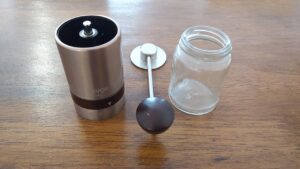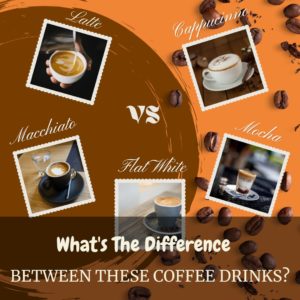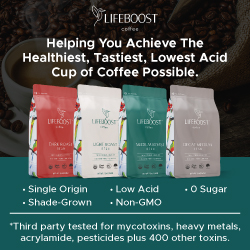
Here we will take a closer look at what factors influence how much caffeine is in your cup of joe, as well as some tips for reducing your caffeine intake. Keep reading to learn more!
What is caffeine?
Caffeine is a naturally occurring substance found in the leaves, beans, and fruits of more than 60 plants, including coffee. It’s also added to some soft drinks and energy drinks. Caffeine works by blocking adenosine receptors in the brain. This increases the release of dopamine and norepinephrine, which results in increased alertness and improved focus.

Caffeine content in different types of coffees
There are different ways to measure how much caffeine is in a beverage. The most common way to measure caffeine content is by milligrams per ounce (mg/oz). But because people often drink different sizes of caffeinated beverages, it can be helpful to look at the caffeine content in terms of milligrams per serving (mg/serving).
The caffeine content in coffee can vary depending on several factors that we will discuss later in this article. For now, here are some general ranges of caffeine content in coffee beverages:
- Brewed Coffee: 95-200 mg of caffeine, 8-oz serving
- Decaffeinated Brewed Coffee: 2-12 mg of caffeine, 8-oz serving
- Espresso: 63-75 mg of caffeine, 1-oz shot
- Decaffeinated Espresso: 0-15 mg of caffeine, 1-oz shot
- Instant Coffee: 30-90 mg of caffeine, 8-oz serving
- Decaffeinated Instant Coffee: 2-3 mg of caffeine, 8-oz serving
Caffeine Content of Popular Brands
The caffeine content of popular coffee brands can vary from as low as 50 mg to as high as more than 400 mg. It all depends on the type of bean, how it’s roasted and how it’s brewed.
When it comes to popular coffee brands, Starbucks Grande Coffees range from 260 to 410 milligrams of caffeine. Dunkin’ Donuts large coffees have about 270 milligrams, while their mediums have 210 milligrams. And McDonald’s McCafé regular coffee has 180 milligrams of caffeine.
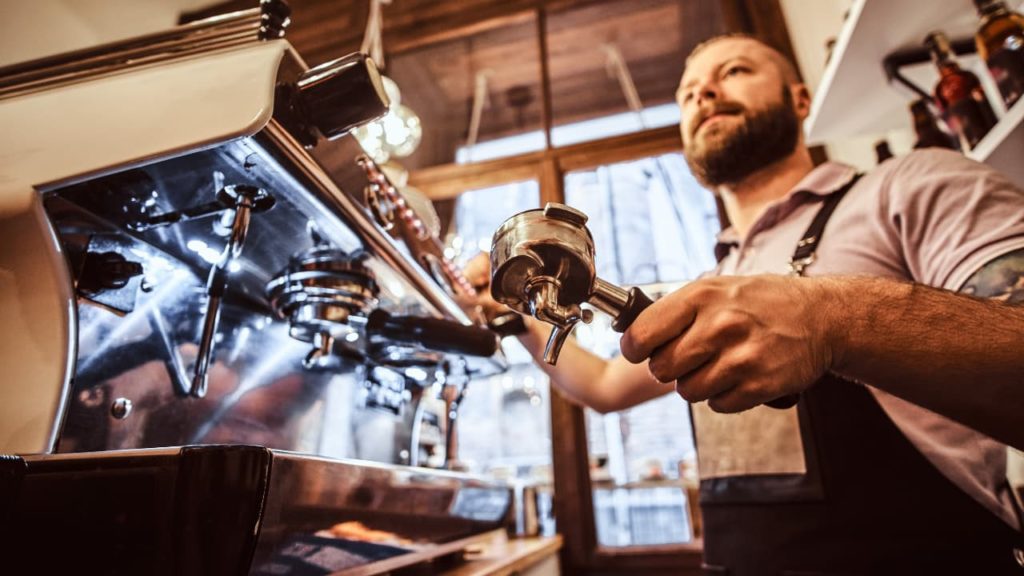
The caffeine levels in these coffees can vary depending on the origin, processing methods and a lot of other variables. But this should give you a general idea of what to expect. As always, it is best to check with the manufacturer if you are looking for specific information on caffeine levels.
Here is a list of popular coffee drinks in coffee shops and their caffeine content:
| Coffee drink | Serving size | Caffeine (mg) |
|---|---|---|
| Dunkin’ Donuts Coffee with Turbo Shot | Large, 20 oz | 436 |
| Starbucks Coffee, Pike Place Roast | Venti, 20 oz | 410 |
| Starbucks Coffee, Blonde Roast | Grande, 16 oz | 360 |
| Starbucks Coffee, Pike Place Roast | Grande, 16 oz | 310 |
| Dunkin’ Coffee | Large, 16 oz | 270 |
| Starbucks Coffee, Dark Roast | Grande, 16 oz | 260 |
| Starbucks Caffè Americano | Grande, 16 oz | 225 |
| Dunkin’ Donuts Coffee | Medium, 14 oz | 210 |
| Starbucks Espresso Frappuccino | Venti, 24 oz | 185 |
| Starbucks Caffè Mocha—hot or iced | Grande, 16 oz | 175 |
| Starbucks Iced Coffee | Grande, 16 oz | 165 |
| Starbucks Espresso | Doppio, 2 oz | 150 |
| McDonald’s Coffee | Large, 16 oz | 133 |
There can be a lot of variation in caffeine content even within the same brand of coffee. This is due to factors such as the type of bean used, the roasting method, and the brewing method.
What factors influence how much caffeine is in coffee?
The amount of caffeine in coffee can vary depending on several factors. Some of these include:
- Type of coffee bean
- Roast level
- Grind size
- Brewing method
- Serving size
Let’s look at these factors more carefully.
Type of coffee beans
There are great variations when it comes to the coffee bean. Even the same species might yield different results depending on the origin, harvesting, processing, etc.

Roast level
During the roasting, the coffee bean loses water, expands in size and becomes less dense. The longer you roast it, the bigger the bean gets. In terms of weight, the caffeine content of the beans should be equal. In terms of volume (or scoops), there might be some minimal differences.
You shouldn’t notice a significant difference between the light roast and the dark roast of the same coffee beans.
Grind size
If you use a finer grind size when brewing your coffee, you will extract more caffeine from the beans. The reason is that a finer grind exposes more of the coffee bean’s surface area to the water. This results in increased extraction.
Brewing method
The caffeine content in coffee can also vary depending on the brewing method. Different methods use water in different ways in the brewing process. The longer a coffee is brewed, the longer the grounds are in contact with water resulting in more caffeine extracted.
The temperature is also very important. The higher temperature of the water squeezes out more caffeine from the grounds.
Below is the caffeine content of some popular coffee beverages per 8-ounce serving size. Please bear in mind that these figures depend on a lot of factors so they may vary from case to case:
- French Press: 80-135 mg of caffeine
- Percolator Coffee: 200 mg of caffeine
- Drip Coffee: 165 mg of caffeine
- Pour-over: 175 mg of caffeine
- Turkish: 200 mg of caffeine
- Cold Brew: 155 mg of caffeine
Serving size
This should be a no-brainer. If you double the serving size of your joe, you’ll double your caffeine intake.
Don’t get confused and compare different types of coffee drinks. For instance, adding milk to a 30 ml espresso shot when making a cappuccino will result in a 180 ml beverage. This does not mean that you’ll get more caffeine from cappuccino than from espresso.
Regular coffee vs. espresso
The typical espresso roast is darker than the one for brewed coffee but it doesn’t mean that you can’t use the same roasted coffee for both methods. Other than that, there are quite a few differences between espresso and brewed coffee.
It takes 3-5 minutes to make regular coffee using a filtering system. The keyword here is gravity which creates a coffee with a mild flavor. In contrast to this, espresso is made by pushing hot water through a compacted coffee puck which creates complex flavors!
An espresso is a strong, intense drink so you might think that it has more caffeine than brewed coffee. The truth is – it depends. Espresso contains more caffeine than brewed coffee per volume unit. But a full 16-oz cup of joe will fuel you with a lot more caffeine than a single espresso shot.
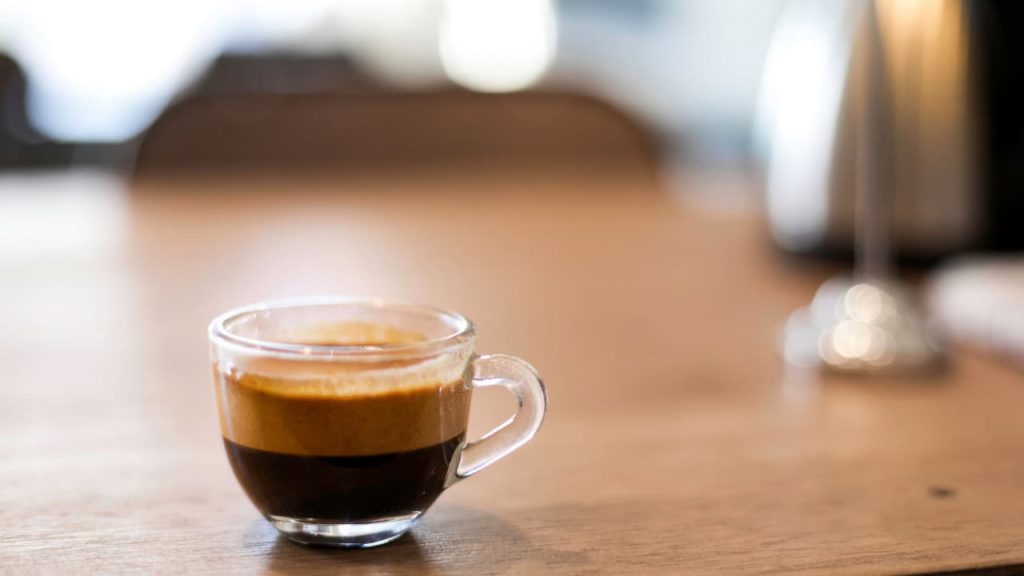
How much caffeine is in espresso?
The main reasons that the concentration of caffeine is higher in espresso are:
- The temperature of water (around 205 degrees)
- high pressure (10-15 bars)
A single shot of espresso contains about 63 mg of caffeine. For a double shot (doppio) that means 125 mg. So if you’re looking for a quick caffeine fix, go for the espresso!
How much caffeine is in a 12 oz cup of regular coffee?
As we said before, a lot of factors may influence the caffeine content in coffee. On average, the 12 oz cup of brewed coffee has about 144 mg of caffeine.
The effects of caffeine on the body
Caffeine can reduce fatigue and give you a temporary energy boost. It can also help to improve your physical performance and mental focus. Yet, too much caffeine can lead to side effects like anxiety, jitters, headaches and difficulty sleeping.
Caffeine sensitivity varies from person to person. Some people can drink many cups of coffee without feeling the effects of caffeine, while others feel jittery after just one cup. Factors such as age, weight and diet can affect how sensitive you are to caffeine.
If you are sensitive to caffeine or are trying to cut back on your intake, it is important to know how much is in your cup.
The health benefits of caffeine
Caffeine can help you stay alert and focused. It can also improve your mood and make you feel less tired. Caffeine may also give you an energy boost and help you burn more calories. It can also benefit heart health, liver conditions and lower the risk of depression.

The negative side effects of caffeine
Caffeine can have negative effects on the body when consumed in high doses. Some people may experience anxiety, jitters, restlessness or nausea from drinking too much coffee. Even fast heartbeat and headaches are not excluded. Caffeine is a diuretic, which means it can make you need to urinate more often.
Caffeine can also interfere with your sleep if consumed close to bedtime. It can take up to six hours for the effects of caffeine to wear off. That’s why it’s best to avoid drinking coffee or other caffeinated drinks late in the day.
If you experience any of these side effects, it’s best to cut back on your caffeine intake. Moderation is key – find the right amount of caffeine that works for you.
Frequently Asked Questions
How much caffeine is in a cup of decaf coffee?
Decaffeination removes most (but not all) of the caffeine from the beans so decaf coffees still contain small amounts. There is about 12-13 mg caffeine in an 8-oz cup.
How much caffeine is in a cup of coffee vs a Coke?
A 12-oz cup of drip coffee has about 95-200 mg of caffeine, while a 12-oz can of Coke has 34 mg.
Tips for reducing the amount of caffeine you consume each day
Try drinking smaller cups of coffee throughout the day instead of one large cup. Avoid adding sugar or cream to your coffee or tea, which can add extra calories and caffeine. Choose decaffeinated coffees.
You can start drinking tea. It has less caffeine than coffee, but it still has enough to give you a little pick-me-up.
Another option is to drink water with lemon or lime juice added. This is a great way to get your hydration and energy levels up at the same time. And finally, if you’re looking for something sweet, try drinking fruit juice or eating a piece of fruit. Both options will give you some natural sugars and caffeine to help wake you up.
Drink smoothies or eat some cereal breakfast in the morning.
Finally, limit your intake of energy drinks and other caffeinated soft beverages. Avoid drinking caffeine late in the day to avoid disrupting your sleep cycle.
What coffee brand has the most caffeine?
The world’s highest caffeine coffee is Black Label by Devil Mountain. This strong, robust brew packs a punch with over 1,500 milligrams per serving of 12 fluid ounces. It will give you the extra boost that you are looking for. And they claim it’s drinkable, smooth and bitter-free.
How much caffeine is too much?
The FDA recommends that healthy adults limit their caffeine daily intake to 400 mg. But some people are more sensitive to the effects of caffeine than others and may need to cut back on their intake. Pregnant women and people with certain medical conditions should limit their caffeine intake even further.
Next steps
Now that you know how much caffeine is in a cup of coffee, you can make an informed decision about how much to drink. Keep in mind that everyone responds to caffeine differently, so it’s important to experiment and find the amount that works best for you. And remember, moderation is key! Too much caffeine can lead to side effects such as insomnia, anxiety and nausea. So enjoy your cup of coffee in moderation and savor the flavor.
Thanks for reading! If you have any questions, feel free to ask in the comments below. Or, if you are interested to learn more about coffee, check out this article about amazing coffee facts.

